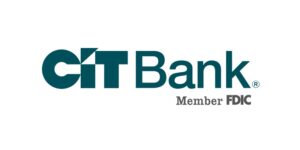 A banks routing number exists for banks to transfer money between different banks every day. It’s a nine-digit code that enables you to move money from bank to bank with online payments. Read below for more information on what a routing number is and where to look for one.
A banks routing number exists for banks to transfer money between different banks every day. It’s a nine-digit code that enables you to move money from bank to bank with online payments. Read below for more information on what a routing number is and where to look for one.
 |
 |
What’s a Routing Number & Why Is It Important?
Normally, banks have routing numbers to enable them to identify one another when making money transactions like wire transfers. It will look like a 9-digit number that can be taken apart by each section that’s represented by 000011112:
- 0000: The Federal Reserve routing symbol that is verified as the Federal Reserve Bank region where it’s headquartered.
- 1111: It’s the financial institute identifier that verifies the bank.
- 2: This number represents the check digit, which is used to diminish potential routing issues.
A routing number was created by the American Bankers Association in 1910 (ABA) numbers. Keep in mind, a bank can have many different routing numbers. This is more common for bigger banks that have branches in different areas. However, for Webster, they also have many different routing numbers because of the 2006 merger with New Mil Bank.
Webster Bank Routing Numbers
With Webster Bank, their routing number changes frequently depending on where you decided to open your account.
Here are their routing numbers by state listed below:
| State | Number |
| Connecticut | 211170101 |
| Massachusetts & Rhode Island | 211370231 |
| Mew York | 021973019 |
*Webster Bank states that the routing number for the previous New Mil Bank members will be 211170156. This was acquired in 2006.*
Where’s the Routing Number?
Typically, the routing number is found at the bottom of the check with the account and check number. Otherwise, you can also download their app and it will appear under your account information.
When you’re making an international transfer, SWIFT codes will be used instead of a routing number. This is so they are able to identify a bank during an international wire transfer. However, Webster Bank doesn’t have this code. In place of this code, they use a bank identifier code (BIC). These codes aren’t the same, but have the same basis. If you have any questions just contact your local Webster Bank.
Conclusion
Overall, a routing number makes transferring money from one bank to another very efficient. This is how banks are able to identify one another to ensure a safe transfer for your money. Plus, with a routing number, it enables banks to easily move your money without a problem. However, if your bank doesn’t have a routing number, don’t stress, there are more ways to protect moving your money around. Now, you know where to look for this nine-digit code for Webster Bank.



